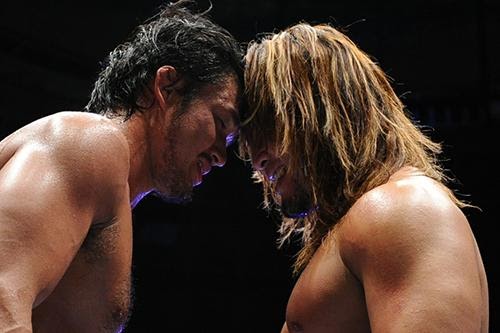
Professional Wrestling has a tendency to incorporate behind the scenes situations into on-screen stories. Many times it can be a distraction, though when handled properly, it can create powerful and unique stories within the medium. For Katsuyori Shibata, his departure and then return to New Japan Pro Wrestling in late 2012 was rooted in several years of genuine animosity. This provided the groundwork for an eventual feud with company Ace, Hiroshi Tanahashi. One centered around Shibata’s second chance. Now in a vastly different landscape, this second chance would ultimately have to go through The Ace. These circumstances make for one of the more compelling series of matches between two men that would ultimately shape the company’s future.
Tanahashi and Shibata’s history can be traced back to their tryout for the NJPW Dojo, passing on the very same day. Shibata would enter a year earlier with Tanahashi still in college. Eventually, the two would be in the same class of Young Lions, alongside Shinsuke Nakamura. Dubbed the “New Three Musketeers”, successors to Keji Muto, Shinya Hashimoto, and Masahiro Chono: The next wave of generational talents to carry NJPW into the new millennium. An early encounter between Tanahashi and Shibata in 1999 showcases their potential, and even foreshadows their future battles, as Shibata lands a stiff palm strike to the face to sway the momentum of the match in his favor. This approach would later define Shibata’s style and presentation. A polar opposite to Tanahashi’s jubilant heroics, or Nakamura’s over-the-top eccentricism, Shibata carried himself with a cold aura just as magnetic. This extension of himself would simply be known as “The Wrestler”. Despite being destined for great things, Shibata prioritized marching to the beat of his own drum, and his relationship with NJPW began to fall apart after graduation.
January 4th, 2006
By 2006, the writing was on the wall for Shibata as a New Japan pro wrestler. He went freelance the year prior, and no matter what NJPW had planned for him, it couldn’t sway his interest to stay. Though the company leaned into his strengths with more shoot-oriented styles at this time, Shibata resented the idea of becoming a yes-man “company wrestler”, and was set to depart for good after the annual January 4th Tokyo Dome show. His opponent would be none other than Hiroshi Tanahashi. The match provides a foundation for their contempt in the coming years.
From Shibata’s perspective, it’s difficult to imagine this match would’ve looked different regardless of opponent. He was as good as gone, coming into the contest with the same point to prove to the front office: mow down whoever is put in front of him, and leave. Tanahashi enters the match understanding this reality, while balancing this betrayal with the pressure to defend the company. Still some years away from reaching his “once in a century” status, Tanahashi is overwhelmed from the opening bell. Shibata rarely resorts to using a wrestling hold, viciously beating down his counterpart in just under 12 minutes.
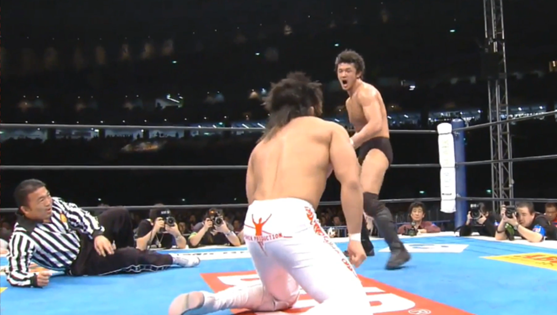
Shibata left NJPW in the dust, making freelance appearances for upstart promotion Big Mouth Loud, and Pro Wrestling NOAH before leaving the sport entirely. An embarrassed Tanahashi only rose from this moment, reaching main event status later that year. In Shibata’s absence, Tanahashi would win the IWGP Heavyweight Championship 5 times, and became a perennial favorite in the G1 Climax tournament, successfully winning in 2007. A name always atop the marquee, he shouldered the burden of turning around the entire company at its lowest point, capturing the hearts and minds of growing audiences in the process.
Shibata would be rehired by executives of NJPW’s parent company in late 2012, unbeknownst to NJPW staff or the roster itself. This was not received well by any means, though Shibata was kept towards the bottom of the card. He returned accompanied by fellow MMA veteran Kazushi Sakuraba, slotted into the tag division until an injury suffered by Sakuraba would find Shibata in single’s competition. After feuding with childhood friend Hirooki Goto throughout 2013, The Wrestler would enter the G1 Climax 23. By the luck of the block drawing, the inevitable showdown with Tanahashi was set for the final night of the tournament.
August 11th, 2013
The G1 23 is viewed as a reemergence for Shibata. His legendary display of violence with Tomohiro Ishii is still celebrated to this day. It’s a match that established both men in the single’s division with their uncompromising, brutal approach to the sport. A match that set a standard for that particular brand of wrestling going forward. Tanahashi always resented this style, arguing there was no “next level” to reach once an audience has experienced it. Shibata, now in first place with one match remaining, expressed to the Ryogoku crowd that he was “beginning to enjoy wrestling”. This was the final straw for The Ace. Tanahashi was infuriated by Shibata’s comments, with the sentiment that his newfound enjoyment of the sport was a convenience that benefited off of the work of those he abandoned. Trailing by just one point, Tanahashi needed a victory for a berth in the final later that night. This tournament was Tanahashi’s most straightforward path to Kazuchika Okada, amidst their generational feud. With the personal implications of this Shibata match, it further complicates Tanahashi’s position. A few results in Shibata’s favor could see him in the main event of Wrestle Kingdom, and take a spot Tanahashi has fought to maintain for 7 years, in less than one.
A far less jubilant Tanahashi enters Ryogoku. While he’d never deny his beloved fans reciprocation, his air guitar plays a somber tune. Shibata remains cold as ever in his corner as Tanahashi soaks in the packed Sumo Hall. This is what The Ace has built, and he cannot afford to lose it now. All palpable awkwardness and tension is broken from the bell, as Shibata attempts to pick up where he left off six years ago with a thunderous slap to the face. Tanahashi maintains his composure for a moment, as seven years of contempt bleeds onto the screen, he answers with a slap of his own. From this point there is no holding back, and the two ignite in a sprint of one-upmanship, while never once leaving the ring. Every strike, every hold, and every throw are matched. The way the two carry themselves in this encounter implies something much more calculated than simply wanting to hurt each other. Tanahashi’s insistence to match Shibata in every facet shows how far he has come, demonstrated by successful execution of a dragon screw while withstanding a flurry of strikes – something he was unable to execute in their Dome match.
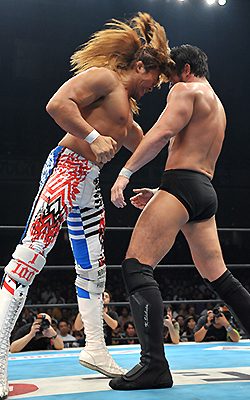
Shibata’s headstrong approach is unchanged, and is ultimately his undoing. Instead of taking a pinfall victory, Shibata attempts to add insult to injury by hitting a Go 2 Sleep, the finishing move of close friend and NOAH’s GHC Heavyweight Champion KENTA. Tanahashi is just able to escape and win with a flash pin, holding it beyond the three count. Tanahashi revealed that he intended on winning this match with a more traditional wrestling move, opposed to his High Fly Flow. A way to personally demonstrate his development to his opponent.
Shibata entered the match assuming his superiority, though he left understanding he could not quite measure up to the barometer itself. Tanahashi is the standard now, and while he would ultimately come up short in the final, a fan vote would allow him to headline Wrestle Kingdom with fellow musketeer, Shinsuke Nakamura.
May 25th, 2014
Shibata and Tanahashi wouldn’t cross paths for another nine months, this time in a tag team setting for a number one contendership, teaming with Hirooki Goto and Togi Makabe respectively. The interactions between The Ace and The Wrestler here showed that there was no love lost between the two, eager to resume their war before the bell rings. Tanahashi takes liberties this time, with a slap to the face, mirroring the sequence from the year before. Tanahashi is unable to land a High Fly Flow, and he absorbs an extreme amount of punishment for his troubles. Neither man was involved in the decision, and this conflict was from over. The wait for another single’s match wouldn’t be a long one, as the two once again drew into the same block in that year’s G1 Climax tournament.
July 26th, 2014
Taking place on Night 4 in Akita, Shibata enters this match on 4 points, including a win over Shinsuke Nakamura. A win over both of his musketeer counterparts would be an emphatic statement of intent, taking back the position always envisioned for him, on his terms. The extreme heat inside the Prefectural Gymnasium, as well as its stationary light fixtures, created an underground fight-like atmosphere. Tanahashi finds himself in uncharted territory, taken back by the overwhelming vocal support for Shibata, who uses this to his advantage. This moment underlines a dynamic of the entire feud, that such a hostile conflict exists outside of the traditional presentation of Good vs Evil. It’s simply two beloved competitors who cannot stand each other.
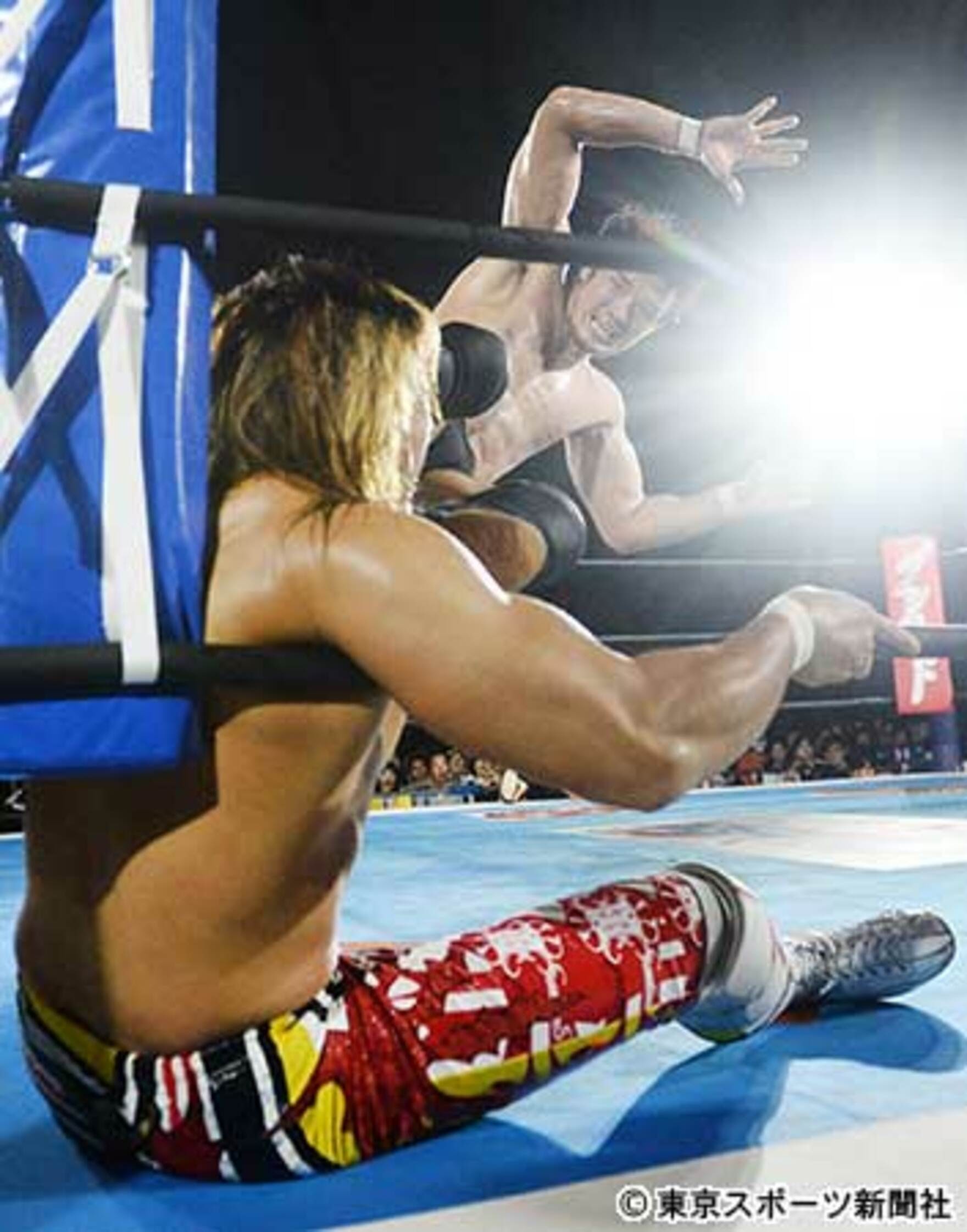
An uncharacteristic clean break allows Shibata to catch The Ace with his guard down, and the now ritualistic slap to the face once again sets things in motion. Tanahashi is overwhelmed with doubt, caught on the backfoot, being first to exit the ring in retreat. It’s rare to see The Ace in such a state, and Shibata is one of the few who could garner that kind of response from him.
The two fight to complete physical exertion, and with Tanahashi in a heap, Shibata once again attempts to win with the Go 2 Sleep. After a near-repeat of last year’s match, Shibata kicks out of the roll up attempt, and executes the move properly. Following a final PK, Shibata pins Tanahashi, and vindicates his return as he envisioned it. The Wrestler has no parting words for the crowd, and storms off.
A main event victory over Tanahashi is enough to elevate any wrestler’s status, but in the case of Shibata, there’s no greater method to legitimize his comeback than this. The scales have shifted in his favor, proving that he belonged in this spot. Tanahashi was in shambles, left to wonder if everything he’d put into rebuilding the company was in vain. Though not unlike those lean years, he would find the strength within him one more time, and a rematch was scheduled for Destruction in Kobe.
September 21st, 2014
For this special singles match, the necessity of the win falls back onto Tanahashi, with no tournament points or championships at stake. This was a grudge match, plain and simple. The win in Akita saw Shibata go from a man with a chip on his shoulder, to the obstacle in Tanahashi’s way. An elevated status, with a confirmation bias that Tanahashi needed to disprove. A much more fiery, focused Ace enters the Kobe Memorial Hall. His demeanor no longer reflects the awkwardness or apprehension he’s carried with him before. This match falls closer in line with the standard NJPW “big match” style of the era, and while it strays from the intricacies of the previous two bouts, it’s a setting these two were always meant to thrive in. The strike exchanges and big moves landed are emphasized by Tanahashi’s visible anger throughout the match. It’s another uncharacteristic trait from The Ace, though the best of rivals draw the necessary response out of one another to reach that “next level” described throughout. Finally hitting a High Fly Flow, Tanahashi claimed a decisive victory over Shibata that has eluded him for his entire career.
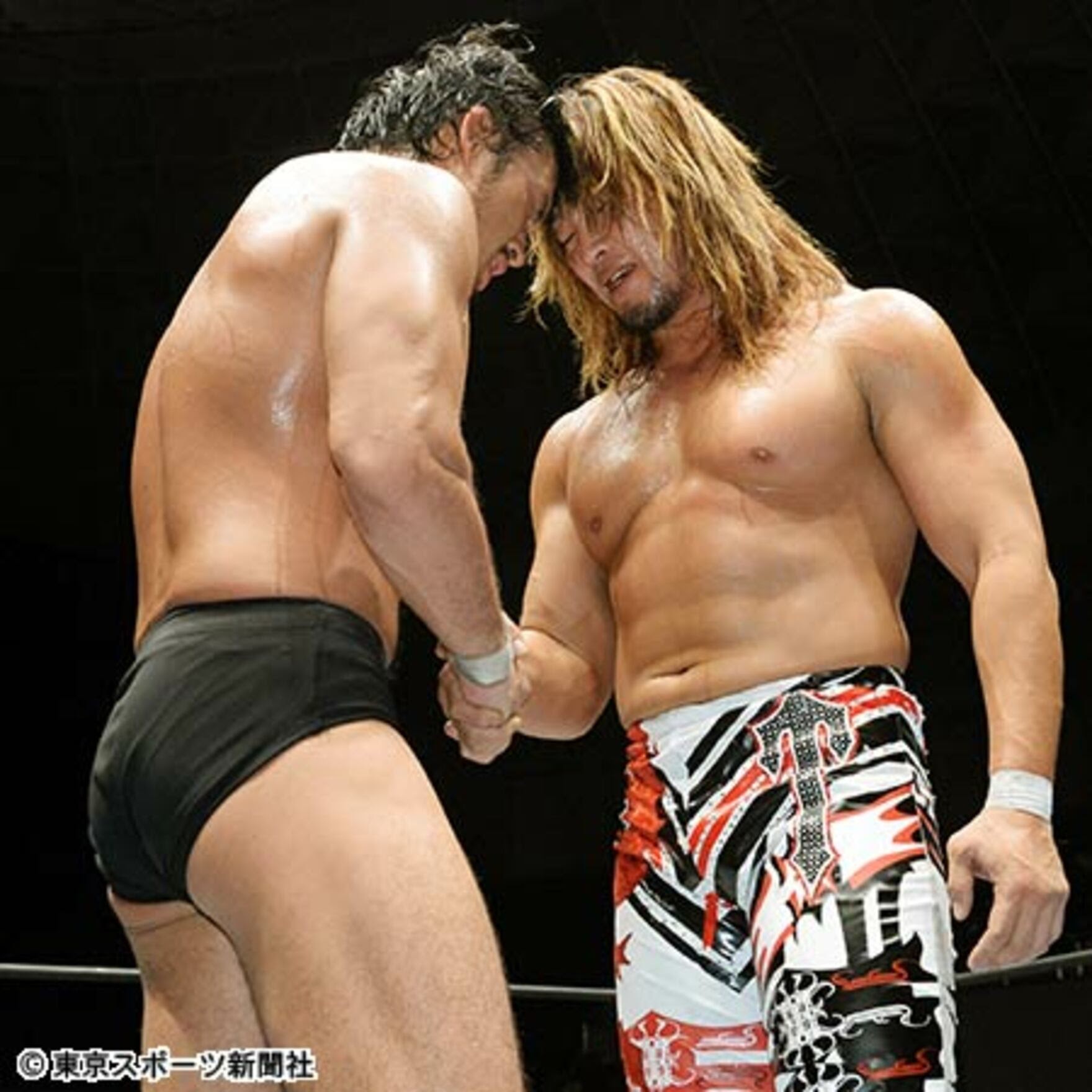
Post match, Shibata extended his hand after an exchange of words, thanking The Ace for all he’s given to the company over the past decade. Tanahashi is caught off guard, though incredibly relieved. It’s unclear what exactly changed in Shibata’s heart during this match. Perhaps it’s the self-assurance received in Akita, or respect earned from Tanahashi as the company’s leader in this match, though understanding was ultimately found amongst the violence: the power of professional wrestling.
In defeat, Shibata comes out of this match all the better, even if he still had some detractors. The closure would help propel both men, as Tanahashi would reclaim the IWGP championship that autumn. Shibata now had the vote of confidence from the face of the company.
Tanahashi would state that the focus of the last 10 years was unfair to Shibata, and it was wrong to get in his way. Allowing multiple styles to coexist would be better for the company, stressing the importance of allowing competitors to “wrestle freely”. Comparing their fury to their days as young lions, Tanahashi chose forgiveness, often the hardest choice in these situations.
August 8th, 2015
The epilogue to the two’s heated rivalry saw one more G1 Climax match the following year. Now on cordial terms, it remained to be seen how the two’s ring work would translate. The result corresponds with Tanahashi’s idea of “wrestling freely”, as the two put together their most technically sound effort, with an emphasis on grappling and limb work. Gone is the overwhelming vitriol the two shared (though no lack of violence, as it is a Shibata match), as they each put their best foot forward. On even footing at 8 points a piece, the main event of night 13 was a showcase of the best of their abilities. It’s their only match to surpass 20 minutes. Tanahashi scraped away with a victory by reversing a rear naked choke into another pinfall victory, breaking their tie of two wins a piece. The sudden ending left things open for an eventual rematch, though unfortunately it never came to be. From this point, Tanahashi and Shibata would share the ring in tag matches, most notably, Shinsuke Nakamura’s farewell match the following January.
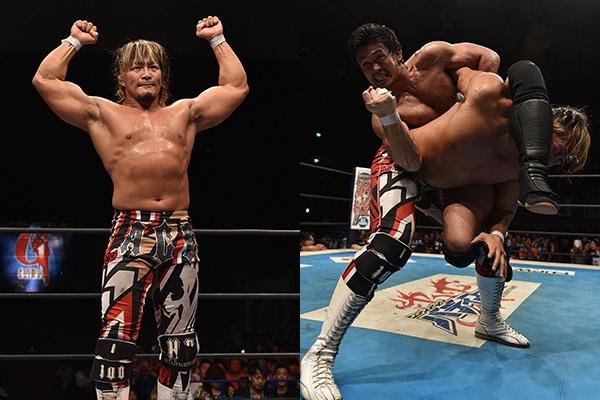
Epilogue
By 2016, Shibata was signed as a full time NJPW wrestler. This opened a new realm of possibilities for The Wrestler, but as his main event run only began, his career was tragically cut short the following year. A life-threatening subdural hematoma forced Shibata to retire. A remarkable recovery would find him once again in the business, though this time appointed to head of the new LA Dojo. Shibata has plenty of ideas for the current product, and takes great pride in his students’ differences to the Dojo graduates back in Japan.
Shibata would make a handful of on-screen appearances, most notably in Tanahashi’s corner in the G1 28 final, to the shock and delight of the audience. The tournament was a brutal gauntlet for The Ace, and in his way was a younger, stronger, Kota Ibushi with his soulmate in his corner. Like in Kobe, Shibata was there to draw out Tanahashi’s “next level” one more time, against insurmountable odds. A fitting conclusion to their on-screen story. Off-screen, Shibata also acted as a common denominator and reference point in Tanahashi’s feud with KENTA throughout 2021. Another program that resulted in The Ace having to turn to a part of him he normally would oppose. Most recently, the two led a seminar at the LA Dojo in June 2022.
It’s safe to say the two achieved what they set out to do years ago, though in typical Shibata fashion, it didn’t take the conventional route. With Tanahashi working with the new generation that Shibata is training, the pair’s fingerprints will be found on NJPW for years to come. Shibata’s story is one of second chances. They are never guaranteed, and it’s important to make the very most of them.
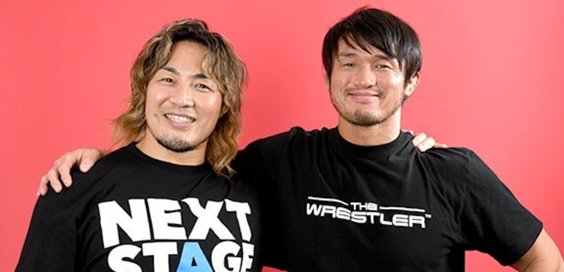
Further reading:
Tanahashi AXSTV Interview: https://streamable.com/e2gp
Shibata “Still Alive” Interview: https://www.njpw1972.com/110425
Shibata Dojo Documentary: https://www.youtube.com/watch?v=25jrxw-E4yI
Unless stated otherwise, images are from Tokyo Sports.
Steve goes by @SSavich12 on twitter.
